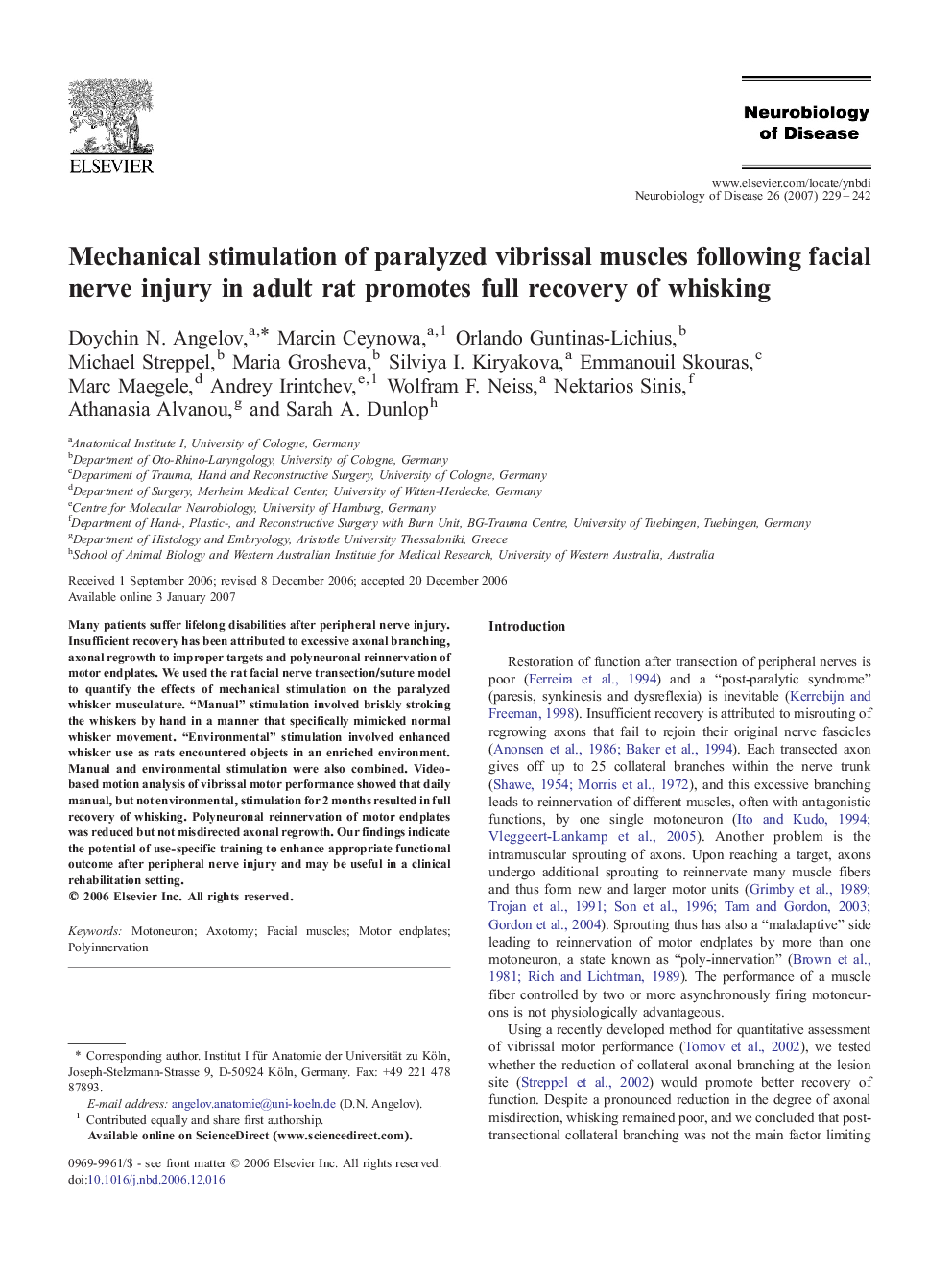| Article ID | Journal | Published Year | Pages | File Type |
|---|---|---|---|---|
| 3070977 | Neurobiology of Disease | 2007 | 14 Pages |
Many patients suffer lifelong disabilities after peripheral nerve injury. Insufficient recovery has been attributed to excessive axonal branching, axonal regrowth to improper targets and polyneuronal reinnervation of motor endplates. We used the rat facial nerve transection/suture model to quantify the effects of mechanical stimulation on the paralyzed whisker musculature. “Manual” stimulation involved briskly stroking the whiskers by hand in a manner that specifically mimicked normal whisker movement. “Environmental” stimulation involved enhanced whisker use as rats encountered objects in an enriched environment. Manual and environmental stimulation were also combined. Video-based motion analysis of vibrissal motor performance showed that daily manual, but not environmental, stimulation for 2 months resulted in full recovery of whisking. Polyneuronal reinnervation of motor endplates was reduced but not misdirected axonal regrowth. Our findings indicate the potential of use-specific training to enhance appropriate functional outcome after peripheral nerve injury and may be useful in a clinical rehabilitation setting.
